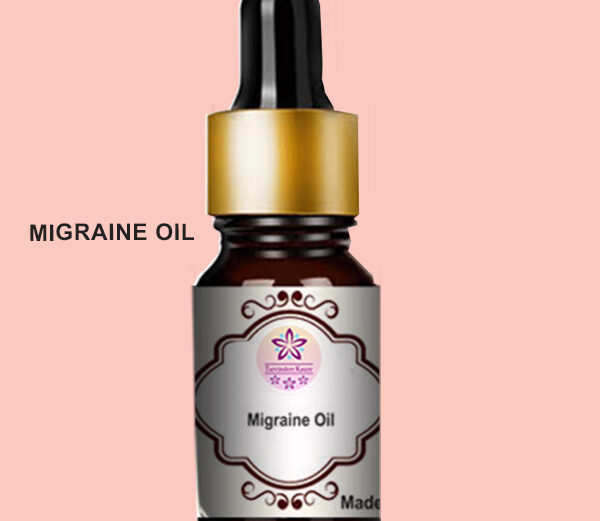Migraine oil is often a blend of essential oils that are believed to offer relief from migraine headaches. It’s important to note that while some people find essential oils beneficial for managing migraines, these remedies are not a substitute for medical advice or treatment. If you suffer from migraines, it’s crucial to consult with a healthcare professional for proper diagnosis and management. Here are some commonly used essential oils in migraine oil blends and their potential benefits:
- Peppermint Oil:
- Benefits: Peppermint oil is known for its analgesic and muscle relaxant properties. It may help alleviate headache symptoms and promote a cooling sensation.
- Lavender Oil:
- Benefits: Lavender oil is often used for its calming and relaxing effects. It may help reduce stress and anxiety, which can be triggers for migraines.
- Eucalyptus Oil:
- Benefits: Eucalyptus oil is known for its anti-inflammatory and analgesic properties. It may help relieve pain and open up nasal passages, potentially easing migraine symptoms.
- Rosemary Oil:
- Benefits: Rosemary oil is believed to have analgesic and anti-inflammatory effects. It may contribute to pain relief and relaxation.
- Chamomile Oil:
- Benefits: Chamomile oil is often used for its calming and anti-inflammatory properties. It may help reduce stress and tension that can contribute to migraines.
- Frankincense Oil:
- Benefits: Frankincense oil is associated with anti-inflammatory and calming effects. It may contribute to overall relaxation and well-being.
- Ginger Oil:
- Benefits: Ginger oil is known for its anti-nausea and anti-inflammatory properties. It may help address nausea associated with migraines.
- Basil Oil:
- Benefits: Basil oil is believed to have analgesic and muscle relaxant properties. It may help alleviate headache symptoms.
- Lemongrass Oil:
- Benefits: Lemongrass oil is often used for its refreshing scent. It may contribute to a sense of invigoration and relief from headache symptoms.
When using migraine oil blends or individual essential oils:
- Dilution: Essential oils should be diluted with a carrier oil before applying to the skin to avoid irritation. The typical dilution ratio is 2–3 drops of essential oil per teaspoon of carrier oil.
- Application: Apply the diluted oil to pulse points, temples, or the back of the neck. You can also inhale the aroma by using a diffuser or placing a few drops on a tissue.
- Caution: If you have allergies, sensitivities, or are pregnant, consult with a healthcare professional before using essential oils. Discontinue use if you experience any adverse reactions.
It’s important to approach the use of essential oils for migraines with caution and to consult with a healthcare professional for personalized advice. While some individuals may find relief from essential oils, their effectiveness can vary, and they should be used as part of a comprehensive migraine management plan.

